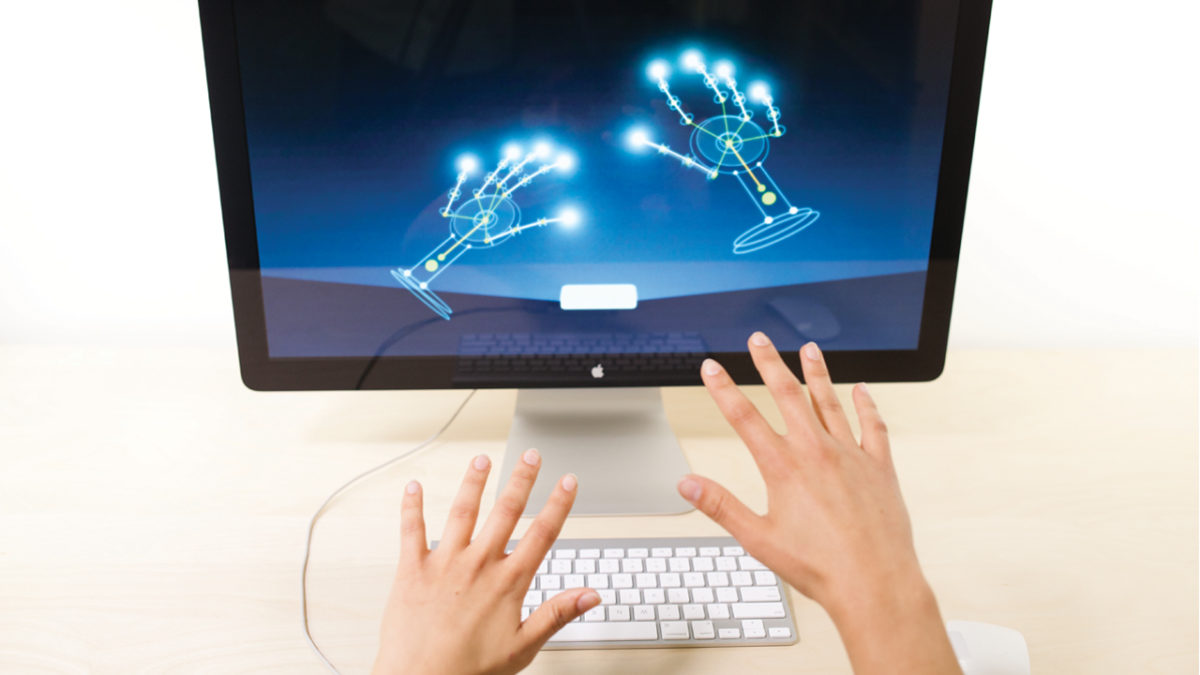Intro
Nowadays everyone uses a computer. Whether it’s laptop, desktop or even a hybrid (two-in-one), most devices always come with a mouse/trackpad. But what if you could just use your own hands instead? Think about it: Playing Call of Duty by making hand motions, shooting enemies with your own finger gun. Sounds interesting, right?
Leap Motion
That’s what Leap Motion is about. Leap Motion is an American company that manufactures and sells 3D motion control devices. These devices are packed with two cameras and three infrared LEDs, making it possible to track the hand and finger motions. The device itself is easily set up by USB (Leap Motion, 2016).
Applications
At first sight, Leap Motion really looks promising. It creates a new way of human-computer interactions and also has various value propositions for multiple industries by changing how we access information. For instance, Leap Motion is more intuitive compared to a mouse and also provides a more organic ‘touch’. These traits are highly valued in the gaming, art, design, music and video industry. It makes it easier for gamers, art designers and audio/video creators to find their way around. Leap Motion is also used in the healthcare industry. Surgeons use Leap Motion to access information during surgeries without touching anything to keep the sterile environment optimized (Leap Motion, 2016).
Future prospects of the Leap Motion technology
However, since Leap Motion is still a device that has to be used external, limiting itself mainly to only USB applicable computers, the 3D motion control technology behind it sparks the interest. The technology promises revolutionary human-computer interactions for the future, providing a new way of accessing and interacting with information. Future developments might make it possible to use this motion technology in all computer science-related areas, which can lead to groundbreaking innovations with high value propositions for almost every industry. People controlling robots in a very natural way wouldn’t sound that far-fetched anymore, right?
Conclusion
To provide an answer to the title of my post, I’d say definitely yes. Leap Motion will be the future of human-computer interactions. Am I being too optimistic about the Leap Motion technology? Or do you have an alternative technology in mind? Let me know in the comment section!
Sources
Leap Motion (2016) [Online] Available from: https://www.leapmotion.com/


I think you are too optimistic about the technology. This controller has been around since 2012 and so far it has not changed the way we control our devices. For example, for typing a keyboard is still unbeaten. In addition, the computer market is rapidly changing to more portable devices. Carrying this around besides a computer mouse could be annoying and a footprint to use the device might not be available. However, a device that has the technology from Leap Motion built-in could be interesting, but is in my opinion still limited to certain user cases. A comparable technology is Microsoft’s Kinect, but that has a limited use within gaming and research.
Nonetheless, with virtual reality (VR) possibly becoming an established (and affordable) technology over the next years, these types of controller could be an addition: When wearing a VR headset, the possibility to move your arms and interact with the software/game would be more immersive than a regular gamepad. And that is exactly what Leap Motion is doing: perfecting their controller to be more accurate for these applications.
https://www.engadget.com/2016/01/22/leap-motion-is-perfecting-natural-hand-gestures-for-vr/